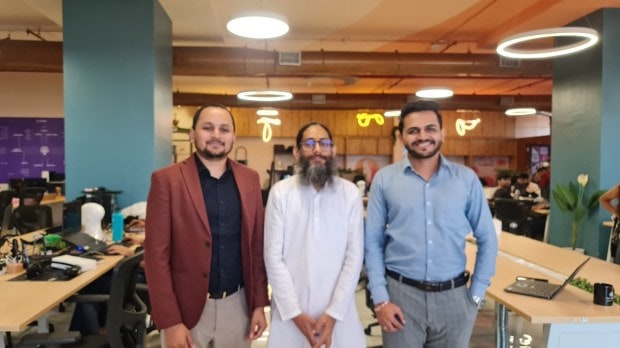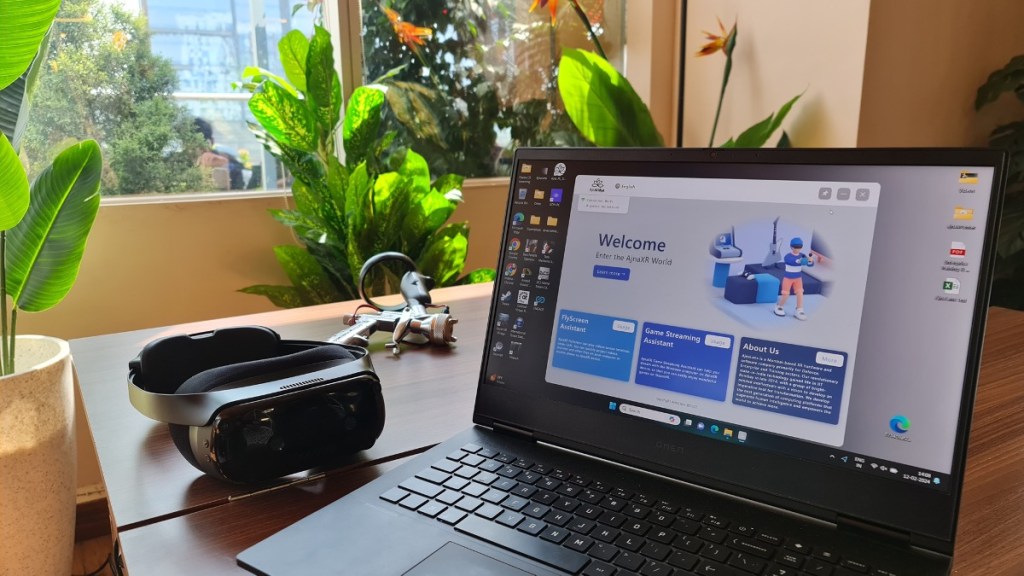It’s not often that you come across a company that has invented a product way ahead of its time, but has been relatively silent about it, choosing instead to deploy the device for a larger cause. Move over Apple Vision Pro, let’s introduce you to the AjnaXR Pro and AjnaXR SE, two extended reality (XR) devices that are just as capable as the much-touted Apple device, yet available at a third of the price.
Priced at Rs 1 lakh for the AjnaXR Pro and Rs 85,000 for the AjnaXR SE, these devices made by AjnaLens – the flagship brand from a Thane-based tech startup Dimension NXG, are currently in use at over 500 industrial training institutes (ITIs) in India, along with Tata Technologies. The partnership helps over 72,000 ITI trainees to virtually skill themselves using the devices, saving time and money, while providing an almost real-world experience in a metaverse, be it for skills like welding, mining or spray-painting.
Ajna, which means “third eye” in Sanskrit, is an apt prefix for the mixed reality devices that the company has developed. However, instead of going mass-market with the devices like Apple, Meta, Microsoft and Google (with Samsung) are doing, AjnaLens has instead focussed on deploying the devices for gamified learning.
Pankaj Raut, Co-Founder and CEO, AjnaLens said: “When we started out, we wanted to use technology to solve challenges at the grassroot level and that’s the intent with which the three of us (cofounders) came together. It wasn’t AR, VR or XR or the business aspect. India has a huge unemployment and skill issue that we were looking to solve using computers and take it to the next dimension.” Hence, the name Dimension NXG for the company. Initially, the company set out looking to build holographic computers.

Promoting gamified learning
The aim was to train people with experiential learning as it would save a large amount of time and cost. For example, training welders on specific tasks could take up to 7-8 months in the real world, but the same could be done in less than 4-5 months with VR/XR training. And using XR also helps in accurately gauging a specific kind of skill, as it can measure things that would not be possible in the physical world.
“Gamification is part of the process,” added Abhijit Patil, Co-founder and COO, AjnaLens. “Instead of just watching a video for training, where you get only about 50 percent retention, if you are actually involved in the process, you retain 70 to 90 percent of what you learn.” The device can track hand and eye movements and accurately measure things like pressure, angle, length, width etc., which allows for a score to be given to users, thereby assessing their skill at tasks like painting or welding.
The devices themselves have evolved over a period from 2016 onwards from a basic headset and computer setup to a complete wearable device with see-through functionality, allowing for a full mixed-reality experience.
The AjnaXR Pro headset comes with a Qualcomm XR2 chipset, 256 GB of onboard storage, with 5k resolution, with inside-out tracking making for a seamless experience, and this eliminates motion sickness – a challenge many VR devices face. The AjnaXR SE is similar to Pro, with lower storage capacity, lower resolution and price.
The devices are completely designed in-house at the company’s facility in Thane, where it has several other projects in the works, especially in the defence space with smart surveillance equipment, 360-camera systems for military use, and smart helmets that can even predict the trajectory of a warhead. Besides India, components are sourced globally from companies such as Qualcomm. Beyond just the hardware, the company also has a team of 120 working on creating a software ecosystem. However, the devices are not restricted to in-house software.
Taking it a step further Abhishek Tomar, Co-founder and CTO, said: “This is the time India should be exporting our know-how if we are to look at a $5 trillion economy. We need a global platform on which developers can upload their XR content for a global audience, which can be shared. We need to brand our products better, like other global players. And that’s why we have an Ajna creator programme.” He added that most global tech players anyway employ mostly Indian software professionals, so it’s imperative that India should try and build more global brands domestically.
Building an XR ecosystem
The company has created a platform called AjnaVidya, which is an immersive learning ecosystem. This allows developers and content creators to upload content onto the platform that other users of the device can access. This helps build training courses for various industries including automobiles, healthcare, defence, mining and aviation among others.
Vedanta, for instance, uses AjnaLens’ virtual training solution for its heavy mining equipment, training its operators in a simulated environment before dropping them into the real mines. A two-wheeler maker and a carmaker use it to train technicians for the assembly line.
Dilip Chenoy, Chairman, Bharat Web3 Association and former MD and CEO of NSDC, says such technology improves India’s chances of scaling and training its skilled workforce multifold. “This technology can do three things – accessibility, affordability and scalability,” said Chenoy. Elaborating on that he explains: “It improves accessibility because you can actually train people at home instead of at a faraway training centre. Second, it improves affordability as the cost of training comes down. Once you have the hardware it is easy to train a welder, without the physical aspect of the costs. And the third is scalability, because you can have a collaborative model, you can extend this training across facilities, and have a shared library of products.”
New training modules for new products can be added to the platform and accessed via the device, which increases the ability to scale up training programmes, which is what AjnaVidya has set out to do – creating an ecosystem that isn’t dependent on geographical boundaries, can be remotely accessed and provide collaboration across remote teams working on a common project. They can all meet in the metaverse and work on designs or skills together.
Also read: Hero Vired launches seven-month certification programme in Extended Reality
This solution from AjnaLens has won a few laurels like the 2023 CES Innovation Award which had contenders like Microsoft’s Hololens in contention, a Graham Bell Award back in 2016, top 5 startup ranking by Qualcomm. The company was initially a bootstrapped firm, but it secured funding in 2019 through angel investors including Vijay Shekhar Sharma, Chetan Kajaria, IDBI Capital, Khimji Ramdas Group and LetsVenture among others.
Although the company was reluctant to talk financials, company filings show it clocked revenue of Rs 15.8 crore last year, up from Rs 9.1 crore the previous year, with a net worth of Rs 25 crore. However, it’s still in a cash-burn stage as it expands with a net loss on the books of Rs 3.5 cr. The company is confident that with orders especially from its defence solutions and scaling its XR training solutions on the AjnaVidya platform it will rapidly grow. XR is expected to contribute about $240 billion to India’s economy by 2030, according to “The Potential Global Economic Impact of Metaverse” report. There are many Indian startups in the XR space, with only a few in the hardware space, while most are in the software space. Companies such as FusionVR, Innovate Labs, Simbott and others have been building innovative solutions for industry. On the consumer side, however, it is the global players that dominate in VR headsets for gaming. That said, using XR in skilling and education can help India’s overall growth prospects.









